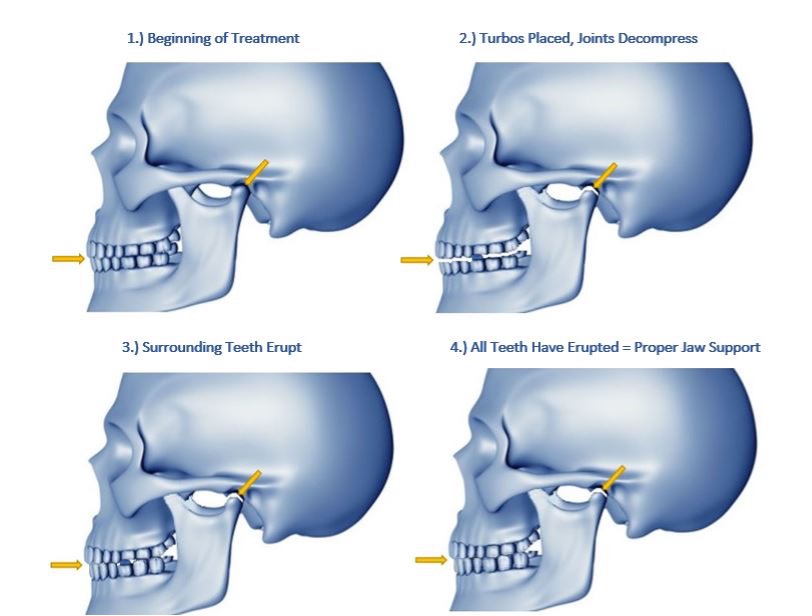– 
Due to popular demand, and believe me, people are asking a lot these days, I would like to explain what turbos are all about. When we do braces at our office, we put little plastic lifters – from here on we will call them turbos- on top of a few teeth to determine the height we want the teeth to be in order to support the jaw joints correctly. How about a little background on this concept?
When I meet a new patient in my office, in most cases I discover that their back teeth are not tall enough to support the jaw bone in the proper position in the jaw socket. So because of this, what often happens is that the protective disc (made of cartilage) that is on top of the jaw bone, becomes dislodged and can then pinch upon blood vessels and nerves in that area. Here is the source of so much head and neck pain in so many people. Unfortunately, I meet many adults who have had this problem for many years and now are in desperate need of help. When I meet a child with similar issues, it is oftentimes much easier to help them because at a younger age the teeth move better and the bones align easier. At a young age, almost certainly the wonderful ALF appliance can open up space for the discs and make the joints better. And the little turbo allows the teeth to erupt taller which in turn protects the space needed for the discs in the joints. Hopefully this is making sense.
Now, continuing with the idea of the turbo. The turbo basically creates a ‘fulcrum’ or a lifting point so that the adjacent teeth can now grow taller. The taller teeth then support the jaw bone better in it’s socket. Again, I hope this is making good sense: taller teeth = better jaw support. The taller teeth effectively protect the disc space in the socket and that slipped disc now has a chance to go back into proper position. Once you get a handle on this, it all becomes quite elementary, Dear Watson.
So through the use of turbos, we allow the vertical height of the teeth to change over time in order to establish the height needed to support the jaw joints. It’s a process and it takes time to get there, but it is always well worth the effort. Granted, sometimes the discs are already too damaged to help them, but we always must give it a try. And considering that 90% of the time this process works well, then it is worthwhile!
